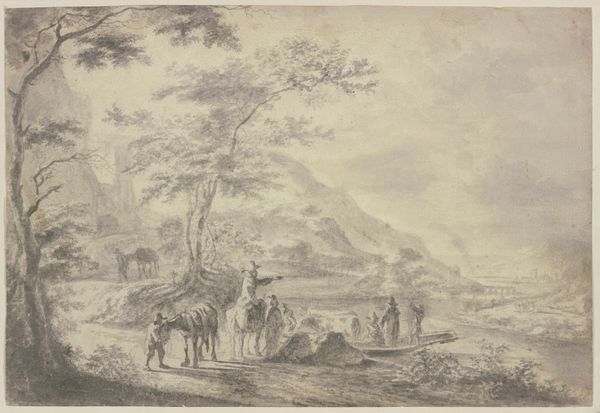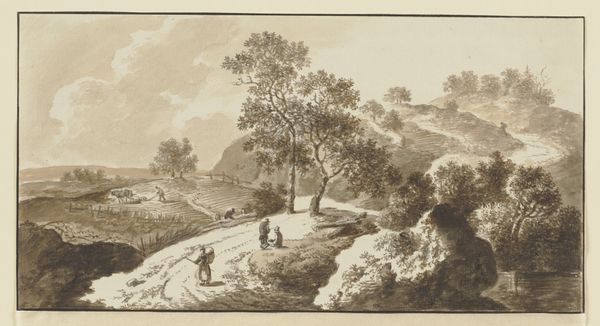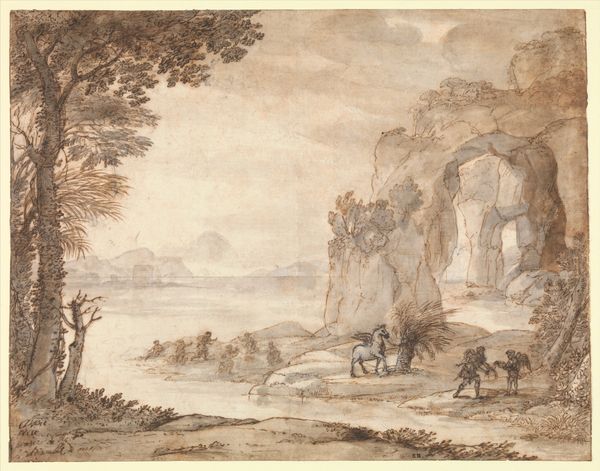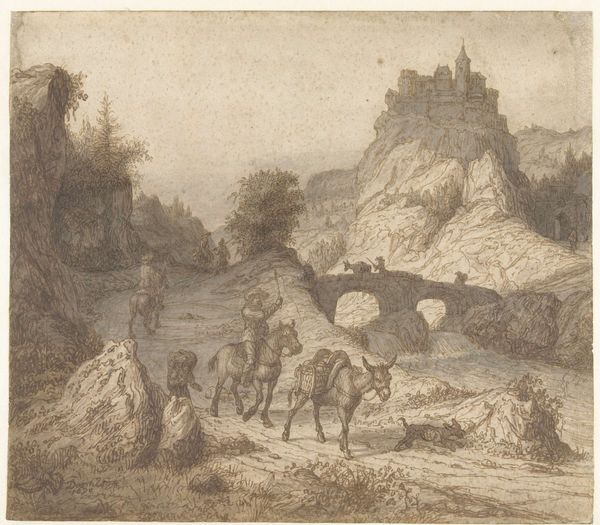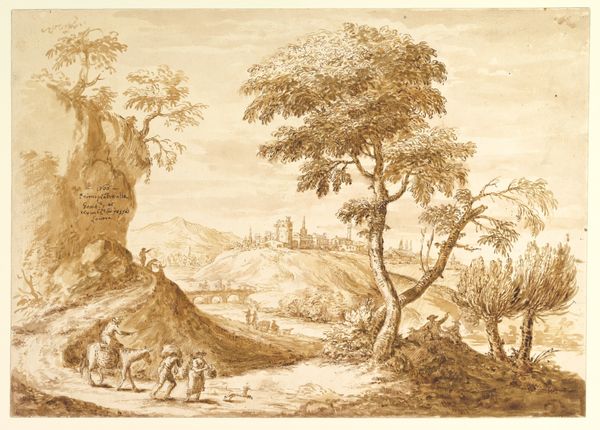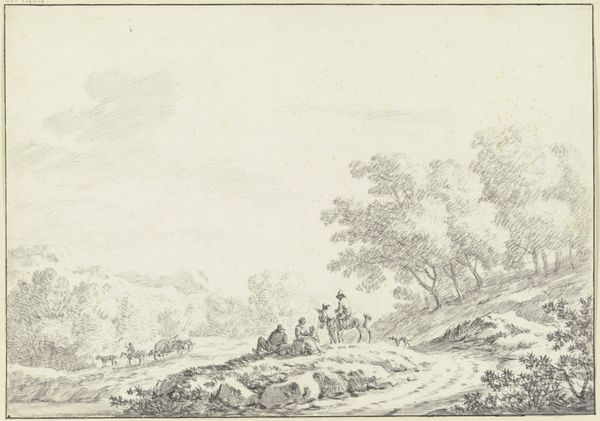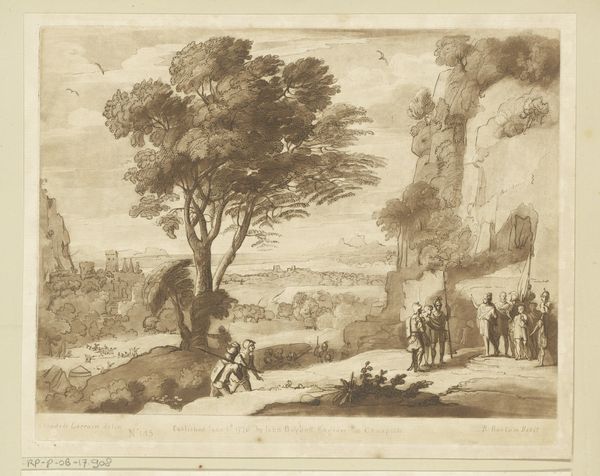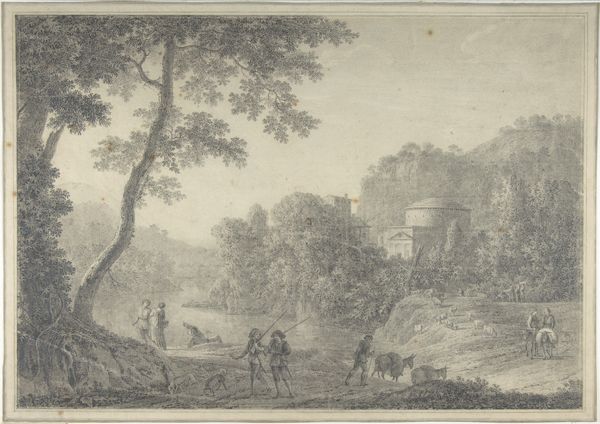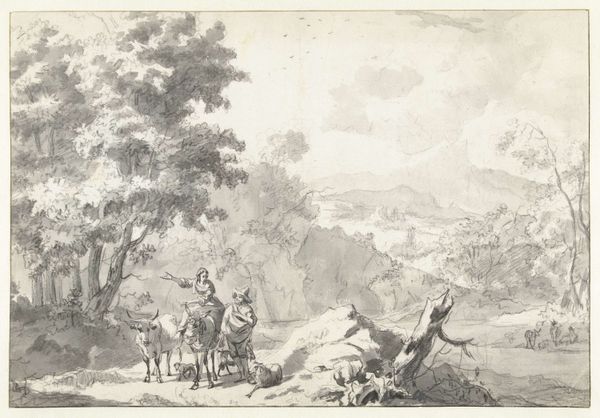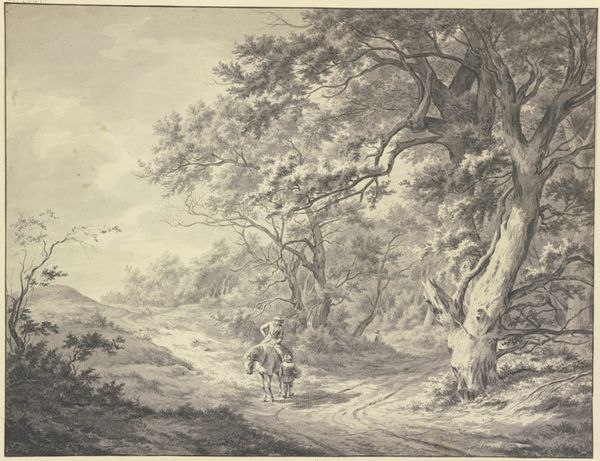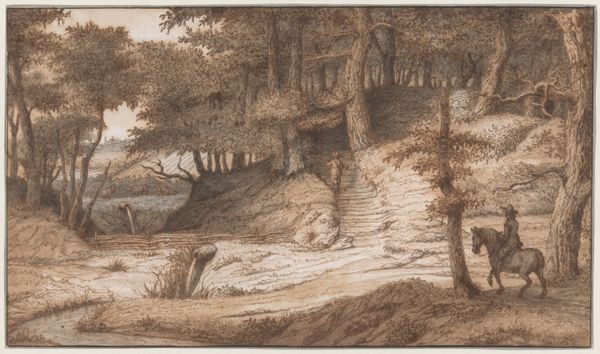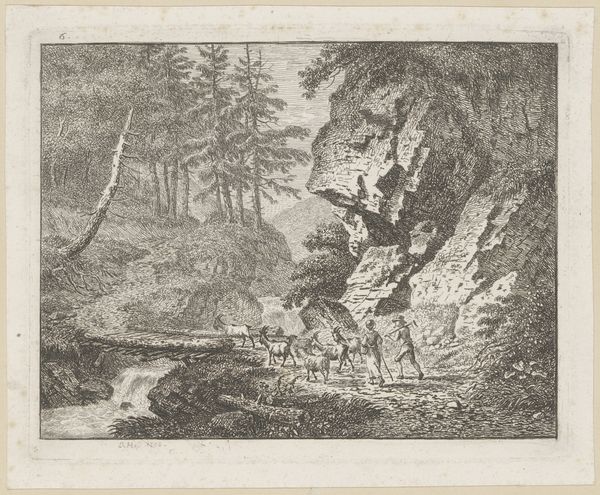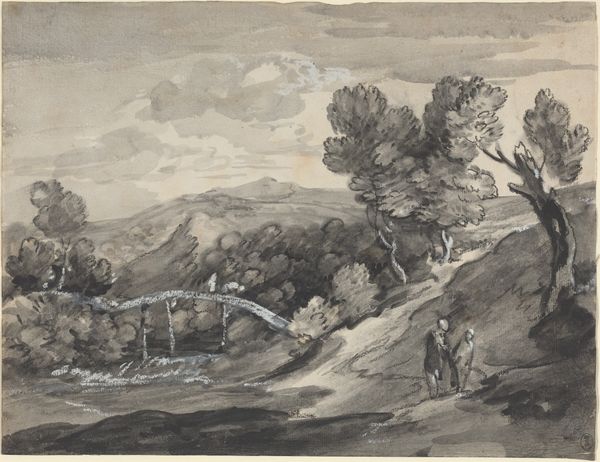
Weg über einen Hügel mit einem Mann zu Fuß und einer Frau auf einem Esel, vorne eine lagernde Gruppe von vier Figuren
0:00
0:00
drawing, ink, pencil
#
drawing
#
baroque
#
landscape
#
ink
#
pencil drawing
#
pencil
#
14_17th-century
Copyright: Public Domain
Curator: Up next, we have a drawing titled "Weg über einen Hügel mit einem Mann zu Fuß und einer Frau auf einem Esel, vorne eine lagernde Gruppe von vier Figuren". The piece is attributed to Lambert Doomer. Editor: What strikes me first is the atmospheric perspective—the way the artist uses delicate strokes and varying tones of ink to suggest depth and distance. It creates a beautifully subtle recession into the landscape. Curator: Exactly. Doomer's landscapes are fascinating as they showcase the intersection of trade and travel during the Baroque period. It shows people moving about for a multitude of reasons, hinting at social structures and the movement of people. The details, like the figure on the donkey, could depict merchants journeying with their goods, for example. Editor: Yes, and observe the deliberate arrangement of figures, objects, and the built environment: how the rugged cliff contrasts the soft slopes and trees. It is this type of asymmetry that truly characterizes Doomer’s landscapes. Also, the muted palette, the sepia tones… it creates a feeling of gentle tranquility. Curator: It also speaks to the relationship between people and nature. Observe the cave and the tiny structure within; this coexistence shows us their attempts to build into the terrain instead of destroying it, or vice versa, representing our constant struggle for accommodation and survival. Editor: That is certainly one way of putting it. To me, this ink drawing exhibits a high degree of compositional intelligence, managing to harmonize intricate detail with broad simplification to guide our vision strategically across its various motifs. Curator: And within those seemingly straightforward compositions, we see reflections of society itself. Travel was part of daily existence for certain people in Dutch society. Looking at this artwork enables us to look more deeply into their experience, especially within these spaces that straddle the line between natural and man-made. Editor: Perhaps, but more crucially, this work teaches us that the essence of great art lies not merely in historical interpretations, but in its self-contained coherence. The ways its lines intersect, merge, create texture – ultimately shape its very spirit. Curator: Well, regardless, it certainly inspires reflection, even all these years later. Editor: Absolutely. Art is all about seeing – literally, figuratively – and then contemplating what that insight brings.
Comments
No comments
Be the first to comment and join the conversation on the ultimate creative platform.
